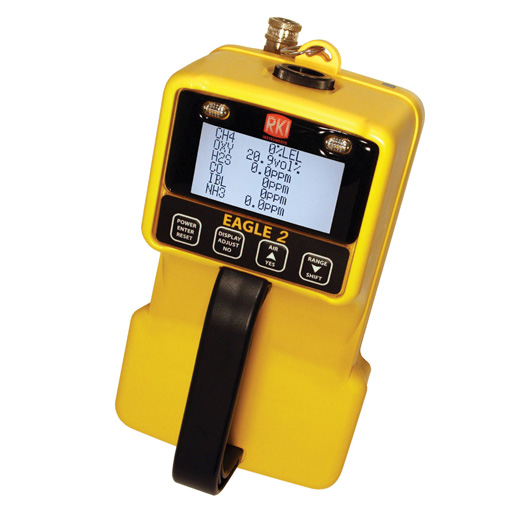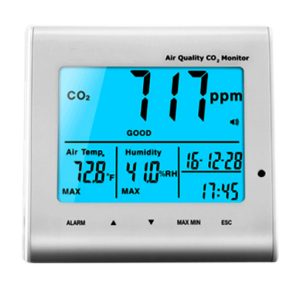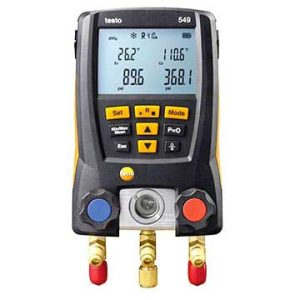The Eagle 2 is designed to withstand extreme conditions (such as nitrogen-purged catalyst units at refineries) and features innovative sensor technology for inert gases. Simplify maintenance and record-keeping with the Eagle 2’s docking and calibration station, the SDM-E2. Automatically charge bump test, calibrate, and archive instrument records using the SDM-E2.
In addition to monitoring combustible gases, Eagle 2 monitors rising O2 concentrations and toxic gases H2S and CO. The CO sensor acts as a dual sensor for carbon monoxide and hydrogen.
Selects either normal or inert mode for alarm levels for the application. The Eagle 2 pump is so powerful that a 125’ hose can be used to monitor the working conditions inside the cracking unit while the hole attendant is holding the Eagle 2 unit outside.
The danger of inert atmosphere – high concentration of explosive gas
It is important to use the proper type of gas meter while working in an inert atmosphere. Inert atmospheres are created when oxygen is displaced by an inert gas, and often a high concentration of explosive gas may be present. An example of an inert atmosphere is the nitrogen-purged catalyst units at refineries. When workers perform any catalyst handling functions in the reactors, special precautions are taken for their inert entry. In these low oxygen conditions, a standard catalytic bead sensor used for combustible gas detection does not operate correctly. RKI’s Eagle 2 uses an infrared (IR) sensor to detect combustible gas from 0-100% LEL. IR technology does not require oxygen for operation.
One of the best gas detectors, now available in Canada
- Designed for catalyst operations at refineries
- Infrared (IR) Sensor for % LEL CH4 —Operates without the presence of O2 unlike traditional catalytic sensors)
- Inert mode monitors for rising O2 levels
- User selects “Normal” or “Inert” mode
- Preset alarm values for each mode type
- External high-capacity dust filter
- Multilingual (5 languages)
- Powerful long-life pump up to 125’ range
- Low flow pump shut off and alarm
- Alkaline 18 hours or NiMH 20 hours capability
- Password protection
- Datalogging standard
- Autocalibration / single gas calibration
- Internal hydrophobic dust filter
- External probe with hydrophobic filter
- Ergonomic RFI / EMI / chemical / weather-resistant enclosure
- Intrinsically safe design, CSA approval
Specifications
| Enclosure | Weatherproof, chemical resistant, RFI / EMI coated high impact polycarbonate-PBT blend. Can operate in 2.0” of water without leakage. Ergonomically balanced with rugged top-mounted handle. Water & dust resistance equivalent to IP64. |
| Dimensions | 9.5” L x 5.25” W x 5.875” H |
| Weight | 3.8 Lbs (standard 4 gas with batteries). |
| Sampling Method | A powerful, long-life internal pump (over 6,000 hours) can draw samples over 125 feet. Flow rate approximately 2.0 SCFH. |
| Display | 3 display modes: display all gases, large font-auto-scroll, or large font-manual scroll. Polyurethane protected overlay. Backlight, illuminates for alarms and by demand, with adjustable time. |
| Language | The readout can display in 5 languages (English, French, German, Italian, or Spanish). |
| Alarms | 2 Alarms per channel plus TWA and STEL alarms for toxics. The two alarms are fully adjustable for levels, latching or self reset, and silenceable. |
| Alarm Method | Buzzer 95 dB at 30 cm, four high-intensity leds. |
| Controls | 4 External glove-friendly push buttons for operation, demand zero, and autocalibration. Buttons also access LEL/ppm, alarm silence, peak hold, TWA/STEL values, battery status, conversion factors, and many other features. |
| Continuous Operation | At 70°F, 18 hours using alkaline batteries, or 20 hours using NiMH. |
| Power Source | 4 alkaline or NiMH, size C batteries (Charger has alkaline recognition to prevent battery damage if charging is attempted with alkalines). |
| Operating Temp. & Humidity | 20°C to 50°C (-4°F to 122°F),0 to 95% RH, non-condensing. |
| Environmental | IP-64 Water-resistant |
| Response Time | 30 Seconds to 90% (for most gases) using standard 5 ft hose. |
| Safety Rating | Intrinsically Safe, Class I, Groups A, B, C, D. Approvals: CSA / CE |
| Standard Accessories | Shoulder strap, alkaline batteries, hydrophobic probe, and 5-foot hose, internal hydrophobic filter. |
| Optional Accessories | Calibration station • NiMH batteries • Battery charger, 115 VAC, 220 VAC, or 12 VDC (charge time 4 hours) • Continuous operation adapter, 115 VAC or 12 VDC • Calibration kits • Extension hoses |
| Warranty | Two-year material and workmanship. |
The Eagle 2 is designed to withstand extreme conditions (such as nitrogen-purged catalyst units at refineries) and features innovative sensor technology for inert gases. Simplify maintenance and record-keeping with the Eagle 2’s docking and calibration station, the SDM-E2. Automatically charge bump test, calibrate, and archive instrument records using the SDM-E2.
In addition to monitoring combustible gases, Eagle 2 monitors rising O2 concentrations and toxic gases H2S and CO. The CO sensor acts as a dual sensor for carbon monoxide and hydrogen.
Selects either normal or inert mode for alarm levels for the application. The Eagle 2 pump is so powerful that a 125’ hose can be used to monitor the working conditions inside the cracking unit while the hole attendant is holding the Eagle 2 unit outside.
The danger of inert atmosphere – high concentration of explosive gas
It is important to use the proper type of gas meter while working in an inert atmosphere. Inert atmospheres are created when oxygen is displaced by an inert gas, and often a high concentration of explosive gas may be present. An example of an inert atmosphere is the nitrogen-purged catalyst units at refineries. When workers perform any catalyst handling functions in the reactors, special precautions are taken for their inert entry. In these low oxygen conditions, a standard catalytic bead sensor used for combustible gas detection does not operate correctly. RKI’s Eagle 2 uses an infrared (IR) sensor to detect combustible gas from 0-100% LEL. IR technology does not require oxygen for operation.
One of the best gas detectors, now available in Canada
- Designed for catalyst operations at refineries
- Infrared (IR) Sensor for % LEL CH4 —Operates without the presence of O2 unlike traditional catalytic sensors)
- Inert mode monitors for rising O2 levels
- User selects “Normal” or “Inert” mode
- Preset alarm values for each mode type
- External high-capacity dust filter
- Multilingual (5 languages)
- Powerful long-life pump up to 125’ range
- Low flow pump shut off and alarm
- Alkaline 18 hours or NiMH 20 hours capability
- Password protection
- Datalogging standard
- Autocalibration / single gas calibration
- Internal hydrophobic dust filter
- External probe with hydrophobic filter
- Ergonomic RFI / EMI / chemical / weather-resistant enclosure
- Intrinsically safe design, CSA approval
Specifications
| Enclosure | Weatherproof, chemical resistant, RFI / EMI coated high impact polycarbonate-PBT blend. Can operate in 2.0” of water without leakage. Ergonomically balanced with rugged top-mounted handle. Water & dust resistance equivalent to IP64. |
| Dimensions | 9.5” L x 5.25” W x 5.875” H |
| Weight | 3.8 Lbs (standard 4 gas with batteries). |
| Sampling Method | A powerful, long-life internal pump (over 6,000 hours) can draw samples over 125 feet. Flow rate approximately 2.0 SCFH. |
| Display | 3 display modes: display all gases, large font-auto-scroll, or large font-manual scroll. Polyurethane protected overlay. Backlight, illuminates for alarms and by demand, with adjustable time. |
| Language | The readout can display in 5 languages (English, French, German, Italian, or Spanish). |
| Alarms | 2 Alarms per channel plus TWA and STEL alarms for toxics. The two alarms are fully adjustable for levels, latching or self reset, and silenceable. |
| Alarm Method | Buzzer 95 dB at 30 cm, four high-intensity leds. |
| Controls | 4 External glove-friendly push buttons for operation, demand zero, and autocalibration. Buttons also access LEL/ppm, alarm silence, peak hold, TWA/STEL values, battery status, conversion factors, and many other features. |
| Continuous Operation | At 70°F, 18 hours using alkaline batteries, or 20 hours using NiMH. |
| Power Source | 4 alkaline or NiMH, size C batteries (Charger has alkaline recognition to prevent battery damage if charging is attempted with alkalines). |
| Operating Temp. & Humidity | 20°C to 50°C (-4°F to 122°F),0 to 95% RH, non-condensing. |
| Environmental | IP-64 Water-resistant |
| Response Time | 30 Seconds to 90% (for most gases) using standard 5 ft hose. |
| Safety Rating | Intrinsically Safe, Class I, Groups A, B, C, D. Approvals: CSA / CE |
| Standard Accessories | Shoulder strap, alkaline batteries, hydrophobic probe, and 5-foot hose, internal hydrophobic filter. |
| Optional Accessories | Calibration station • NiMH batteries • Battery charger, 115 VAC, 220 VAC, or 12 VDC (charge time 4 hours) • Continuous operation adapter, 115 VAC or 12 VDC • Calibration kits • Extension hoses |
| Warranty | Two-year material and workmanship. |














